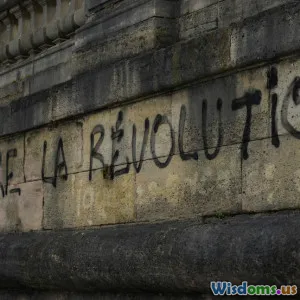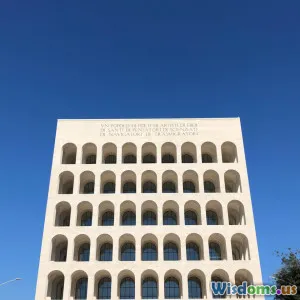
CIA Front Organizations Are More Common Than You Think
8 min read Discover the hidden world of CIA front organizations and their widespread influence beyond popular belief. (0 Reviews)
CIA Front Organizations Are More Common Than You Think
When we think of the CIA, images of shadowy agents, encrypted messages, and covert missions often come to mind. But beyond the imagination lies a nuanced and often unknown world of front organizations—groups that appear legitimate but function as covert arms of intelligence operations. These fronts are more common and diverse than many suspect, embedding themselves in public life and global affairs under the radar.
Introduction: Peeling Back the Veil of Secrecy
In the theater of espionage, not all players wear trench coats or sit behind keyboards. Some mingle directly within civil society—through nonprofits, cultural institutions, or private companies—serving silent yet crucial intelligence objectives. Front organizations are designed to conceal the true sponsor—in this case, the CIA—while enabling communications, resource gathering, and global influence.
Understanding these entities is key to appreciating how intelligence agencies operate discreetly and shape world events even in peacetime. Let’s delve into what front organizations are, why the CIA uses them extensively, and some striking examples illustrating their pervasive presence.
What Are CIA Front Organizations?
At its core, a front organization disguises connections to the CIA, typically operating under a civilian or humanitarian guise. These can be think tanks, research institutes, publishing houses, or charities. Their apparent goals often mask deeper intelligence missions such as recruiting assets, influencing foreign governments, or gathering sensitive information.
According to historian John Prados, author of Safe for Democracy: The Secret Wars of the CIA, “By embedding themselves within legitimate activities, front organizations provided the CIA with cover and flexibility far beyond what traditional espionage could achieve.”
Objectives Behind the Front
- Plausible Deniability: The use of fronts allows the CIA to deny involvement if activities are exposed.
- Operational Cover: Agents can travel and operate under the auspices of these organizations.
- Information Gathering: Fronts serve as hubs to collect intelligence unobtrusively.
- Influence and Propaganda: Some fronts shape public opinion or foreign policy narratives.
Historical and Contemporary Examples
The Congress for Cultural Freedom
One of the most famous CIA fronts was the Congress for Cultural Freedom (CCF), active during the Cold War. Ostensibly a group promoting arts and intellectual discourse, the CCF secretly funded and organized conferences, exhibitions, and publications aimed at countering the spread of Soviet communism.
Documents declassified decades later revealed that the CIA funneled significant funding to the CCF, which influenced authors, artists, and intellectuals worldwide. Prominent figures like composer Igor Stravinsky and novelist W.H. Auden participated in these activities without always knowing the funding sources.
Air America: The CIA’s Aviation Front
Air America was ostensibly a civilian airline operating in Southeast Asia during the Vietnam War. In reality, it functioned as a CIA-controlled fleet conducting covert missions including the transport of personnel and supplies in secret warzones such as Laos and Cambodia.
Its existence remained officially unacknowledged for years, demonstrating the effectiveness of covert organizations in wartime operations beneath political radar.
The Iran-Contra Affair: Fronts in Action
Some CIA-related front activities surfaced during the Iran-Contra affair in the 1980s. Various nonprofit groups, fundraising campaigns, and private companies were used to channel money and negotiate arms sales clandestinely, showcasing how front entities facilitate controversial foreign policy maneuvers.
Why Are CIA Front Organizations So Common?
1. Operational Effectiveness at Lower Risk
Traditional covert actions pose significant risks of exposure. Front organizations obscure the agency’s footprints, providing safe distance. They also allow for more subtle influence campaigns in geopolitics, often under the Gestalt of diplomacy, academics, or humanitarian efforts.
2. Global Reach and Adaptability
Fronts provide a legal and socially acceptable facade to embed agents across borders, leveraging global institutions or NGOs. This network amplifies intelligence collection and influence in otherwise difficult-to-penetrate regions or markets.
3. Changing Focus Post-Cold War
With more nations adopting open societies, the CIA has adapted by increasing reliance on front organizations that fit within civil society frameworks, rather than purely military or intelligence-centered operations.
Impacts and Ethical Considerations
Influence on Civil Society
While some CIA fronts contribute positively on surface level activities—like cultural exchange or disaster relief—their covert missions complicate ethical boundaries. The risk of manipulation or destabilization emerges when intelligence priorities override the public good.
Transparency and Accountability
Decades of revelations about covert CIA fronts have sparked debates about government transparency. The balance between national security and public trust is delicate, as clandestine manipulation risks eroding democratic principles while serving strategic interests.
What Can Readers Take Away?
The hidden prevalence of CIA front organizations reminds us that not all we see in international affairs and organizational activities is as it seems. A charity operating abroad or a local cultural festival may have broader implications tied to intelligence strategy.
For those interested in geopolitics, history, or transparency advocacy, awareness of these fronts enhances critical thinking about international initiatives and warns against naïve trust in appearances.
Conclusion: The Cloaked Actors in Global Affairs
CIA front organizations exemplify an ingenious and widespread method for intelligence operations to weave into the fabric of society. From cultural institutions to airlines and nonprofits, the reach and influence of these covert entities are profound.
By uncovering their existence and operations, we broaden our understanding of how power and secrecy interact behind the scenes of global diplomacy and conflict. As the world grows more interconnected and complex, recognizing the role of such covert fronts is crucial for a nuanced appreciation of international dynamics.
Ultimately, the revelation that CIA front organizations are more common than popularly believed encourages ongoing scrutiny into the delicate interplay between secrecy, security, and civic integrity.
Rate the Post
User Reviews
Other posts in Political History
Popular Posts

















